
Dwarika’s Dhulikhel is designed like a village, nestled into the hillside overlooking the Himalayas
Since the devasting 2015 earthquake, Nepal has slowly been rebuilding itself as a travel destination. Until now, visitors tended to be Everest summiteers and those seeking other, though slightly less extreme, high altitude adventures, but slowly luxury is finding a place in the Himalayan foothills for travellers who seek to immerse themselves in mountain life without the hike. In the second part of her Himalayan journey, Digital Editor Millie Walton crosses the border from North East India to the remote Nepalese mountain retreat, Dwarika’s Dhulikhel in search of a slower pace of life.
Unsurprisingly, the Himalayas are difficult to navigate. It’s not until you’re actually eye to eye with the mountains that you can even begin to appreciate their enormity, not just in terms of height, but length too. The range stretches through Nepal, India, Bhutan, China and Pakistan with over fifty mountains exceeding 7,200 metres (including ten of the fourteen 8000 metre peaks). So making the journey from Darjeeling to Kathmandu isn’t impossible, but it’s not easy. Firstly there’s the drive to the border, which even in one of Glenburn Tea Estate‘s hardy Land Rovers is likely to make the strongest of stomachs queasy. The land border itself is a breeze, the Nepalese border control are easily the most friendly security officials I’ve ever met, but then there’s the flight. The weather systems over the mountains are unpredictable – on a good day it’s a bumpy ride – that said, the views of the world’s highest peaks rising majestically through the clouds makes it more than worth it.

Day beds dotted round the resort provide a perfect viewpoint of the Himalayas
Sitting in the Zero Gravity lounge at Dwarika’s Dhulikhel that’s all far behind us. We’re here for the sunset, which, we’ve been told, illuminates a view of panoramic peaks in soft pinks and golds. The lounge is a rectangular glass box with an alfresco roof top seating area, but the winds are blowing and it looks dangerously like rain so we’re nestled into one of the day beds, playing Bagh-Chal (Nepal’s national game, also known as tigers and goats), hoping that nature will change its mind. Of course, it doesn’t. The storm when it hits is fast and ferocious. Sheets of rain slice into the glass, forks of lightning stab the ground and the wind shakes the sides so violently, we almost expect it to shatter. It’s over in less than ten minutes. The clouds have been ripped apart leaving smudgy outlines of the giants that surround us. There’s no rosy tint, but even these sultry shadows are impressive.
Follow LUX on Instagram
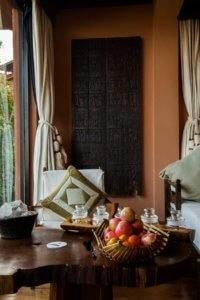
Homely touches in the suites
An hour’s drive outside of Kathmandu, Dhulikhel is an ancient Newari hillside town where tourists flock in the promise of panoramic views from Langtang Lirung in the east, through Dorje Lakpa to the huge bulk of Gauri Shankar and as far as Numbur. Of course, for the true thrill seekers, you can venture by foot into the depths of the Himalayas to a base camp or perhaps even to a peak, but if its luxury you’re after, you won’t find any beyond this point. Just outside of town, Dwarika’s sprawls up the side of a slope, hidden behind thick forest. Built in 2013, as the more subdued sister of the Dwarika’s hotel in the city, its a place of indulgent solitude, where guests are invited to embrace a slower pace of life in search of a more mindful and creative existence. There’s a daily schedule of complimentary activities led by resident gurus and artists including yoga, meditation, pottery and painting all held within little mud huts tucked into the dense foliage. Most beautiful is the Himalayan pink salt room, with walls and floors made from glistening rock crystals. It’s the purest form of salt on earth and is thought to be beneficial for the respiratory system – sitting on the arm chairs with a soundtrack of spiritual chanting, it feels almost otherworldly. Time within these walls loses all meaning.

The resort’s infinity pool
We begin our stay with an Ayurvedic consultation with an enthusiastic doctor who asks us to fill out a form to determine our body type. Most of the Ayurvedic teachings are based on common sense, and whilst sceptics may be turning away at this point, at the very least its an important reminder to prioritise health and mental wellbeing with early nights, mindful eating and exercise. Essentially it’s about learning or re-learning to listen to your body. In urban landscapes, every space is filled with sound (traffic, voices, building sites) – even when we get home, there’s rarely a moment of true silence – and so somewhere along the way, we’ve forgotten how to listen to our bodies. The mountain setting of Dwarika’s then isn’t just about pretty views, but about reconnecting to a more traditional way of living, a way of life which still exists within the Himalayan villages.
Read next: British model, Orla Carolin on her art collective NINE8

The Art Studio at Dwarika’s Dhulikhel. Image by James Houston
The resort takes its inspiration from that simplicity and whilst it is certainly luxurious, it is designed to blend seamlessly in with the natural surroundings. The suites are all bright and spacious with rustic furnishings, cream linens, smooth natural woods and pebble stoned bathroom floor. To be truly of nature, there probably shouldn’t be wifi access or televisions, but since most guests fill their days with chakra meditation or ink painting, there’s really very little opportunity to pull out a device. Our junior suite is centred around the views with floor to ceiling windows allowing the space to fill with natural light and a large terrace where we curl up on the daybed in the afternoons with a cup of herbal tea and homemade cookies, gazing out at the mountains. There are homely touches like a bowl of walnuts for cracking, a pot of honey as a natural sweetener for tea, homemade soaps and a ceramic pot of lemongrass bath salts on the edge of the tub. Each evening coloured cotton scarves are placed on the bedside table, to wear on the following day reflecting a certain energy along with a small silver dish of soaked almonds to promote peace of mind. It’s a world of indulgence, in which every detail has been carefully considered to create an atmosphere of complete calm, and it’s not long before we feel ourselves unraveling.
Read next: Summertime in Moscow at the Four Seasons
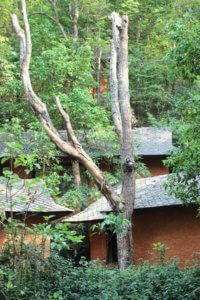
The Spa. Image by James Houston
The food adheres to Ayurvedic principles too; ingredients are locally sourced, and vegetables are plucked straight from Dwarika’s own organic farm. At Mako’s Zen, the Japanese restaurant, which offers set menus of six or eight courses, the cuisine is based on the diet that was originally followed by monks in training (it’s not nearly as intensive as it sounds) and dishes are all vegetarian and light on sodium, designed specifically for easy digestion. The vegetable tempura and maki are the highlights, and although we leave craving a little something more, it is refreshing to go to bed feeling light. For Nepalese traditional cuisine, Nature’s Flavours restaurant serves up by far the best momos (dumplings) I’ve ever tasted, and they look pretty too, dyed (naturally, of course) in bright colours.

Sunset over the mountains. Image by James Houston
On our last morning, before sunrise, we wander to the top of the hill – it’s quite a breathless climb for those unused to altitude (at 1,550metres it’s well above the UK’s highest peak) – to the meditation maze, a winding walled path of sculptures on the grass with hidden speakers playing a continuous track of OM chanting, which has an almost soporific effect as we drift from side to side. The air is fresh and light, not yet saturated with the heavy heat of the day, the grass is damp beneath our feet and the birds are only just beginning to sing. The Himalayas surround us, rising like giant waves into the ice blue sky. It’s a powerful image of stillness and stability, that’s more poignantly therapeutic than any level of luxury ever will be.
dwarikas-dhulikhel.com


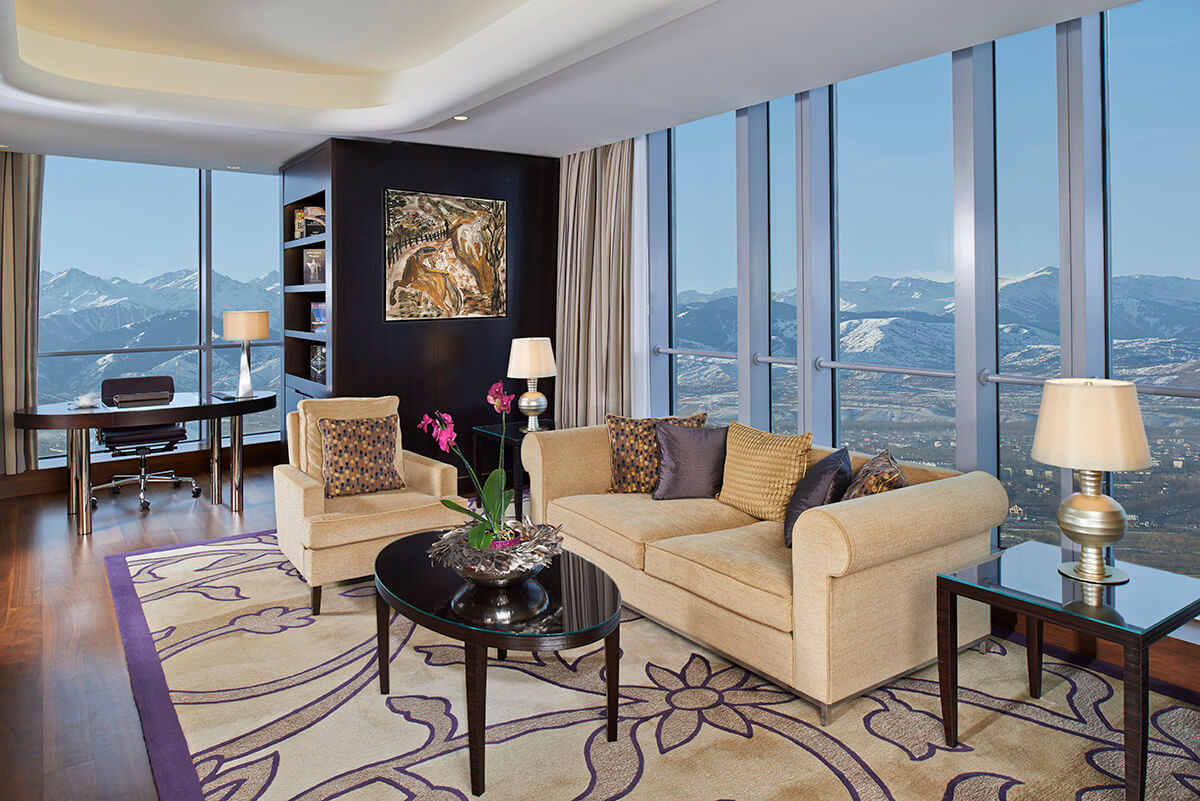


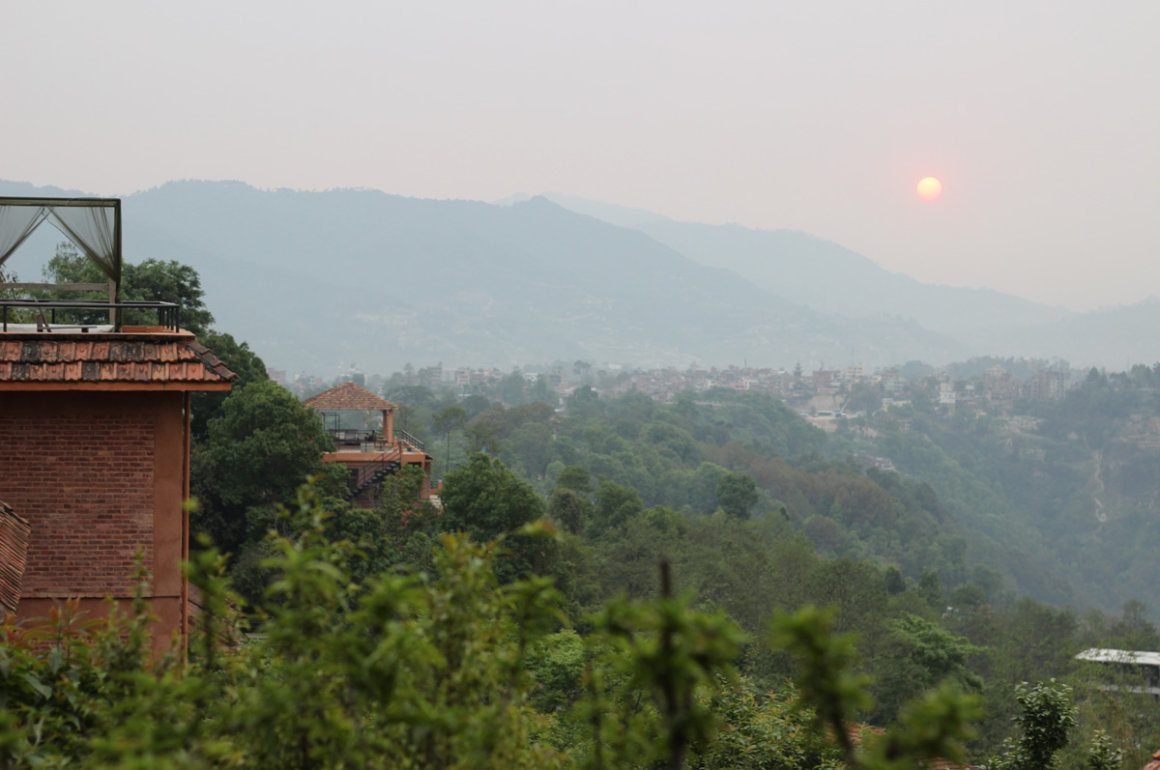









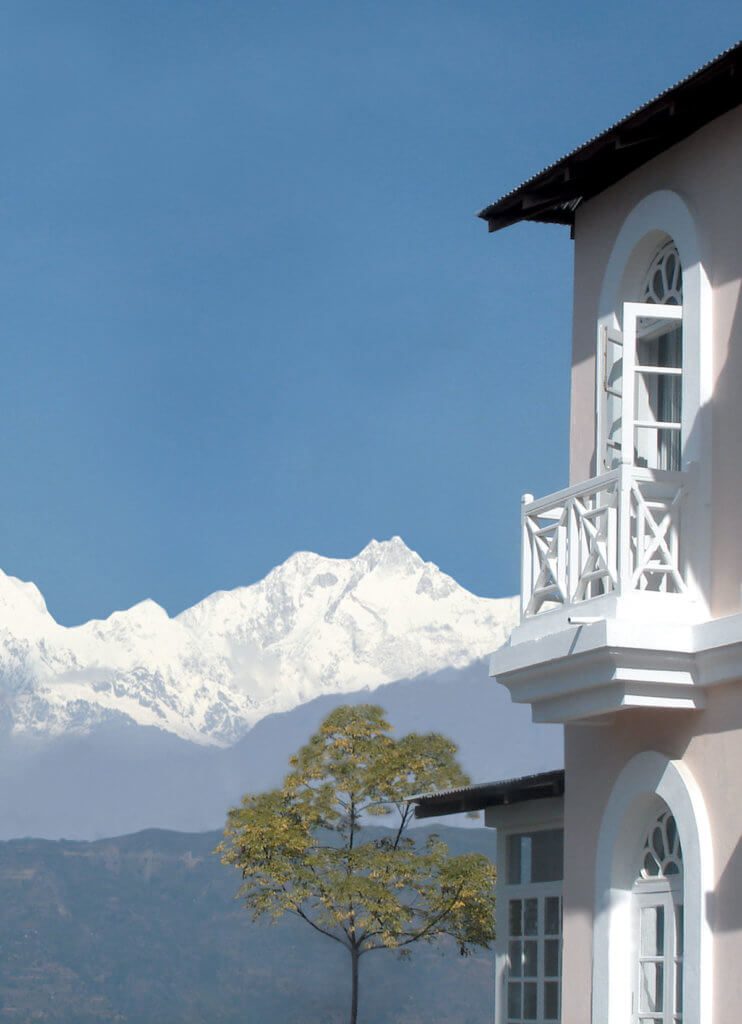

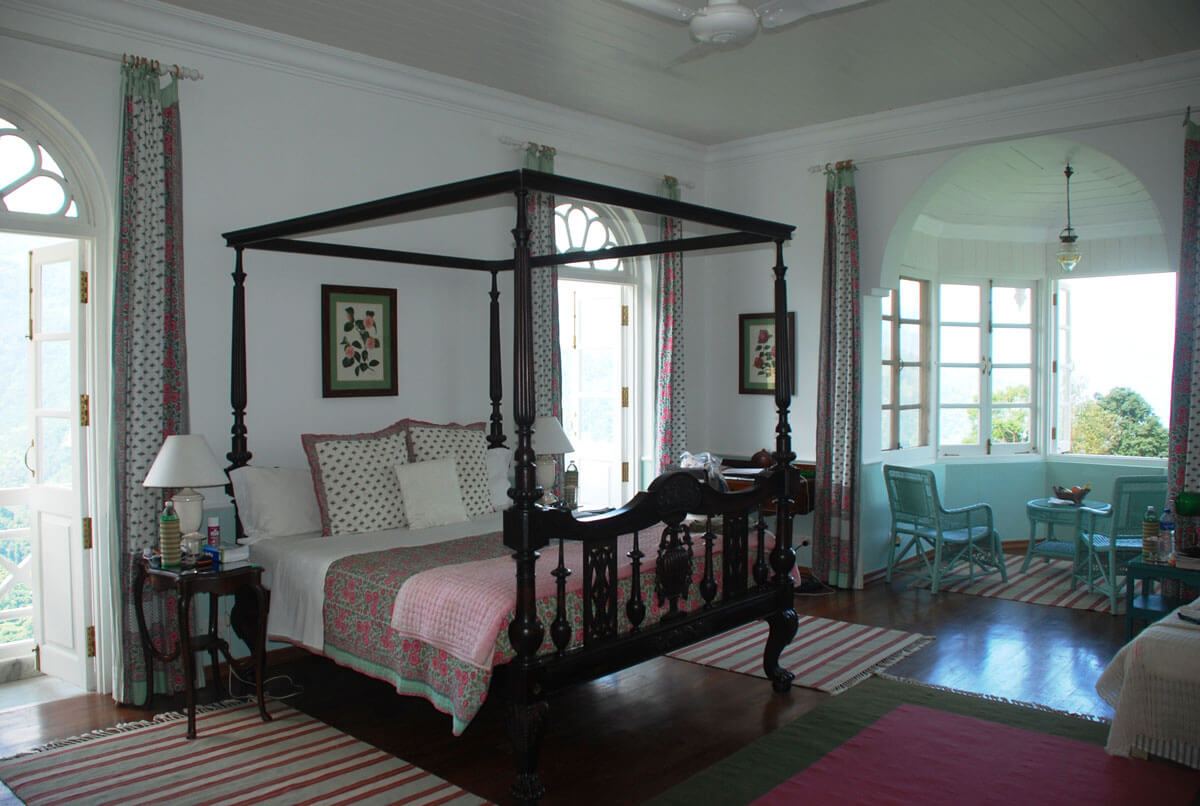






Recent Comments